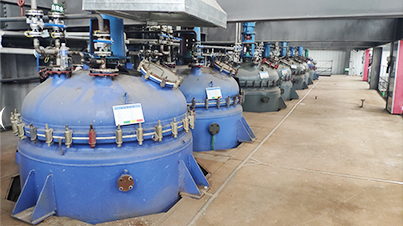acrylic homopolymer
Acrylic Homopolymer Structure, Properties, and Applications
Acrylic homopolymer is a type of synthetic polymer made primarily from acrylic acid or its derivatives, most commonly methyl acrylate or butyl acrylate. These materials are well-known for their versatility and durability, making them suitable for a wide range of applications across various industries.
Structure and Characteristics
The structure of acrylic homopolymers consists of repeating units derived from acrylic monomers. Due to their unique chemical composition, these polymers exhibit a variety of properties that make them highly valued in both industrial and commercial applications. One of the most significant characteristics of acrylic homopolymers is their transparency, which can be optimized for different applications. This transparency allows for their use in products that require clarity and visual appeal, such as automotive headlights or display cases.
Moreover, acrylic homopolymers possess excellent weather resistance, making them ideal for outdoor applications. They are resistant to UV light and can withstand harsh environmental conditions without significant degradation. This property is crucial for products like paints and coatings, where exposure to sunlight and moisture over time can lead to discoloration and reduced durability.
Mechanical Properties
Acrylic homopolymers also demonstrate impressive mechanical properties, such as good tensile strength and flexibility. These features enable them to maintain structural integrity under stress and strain, which is essential for applications like adhesives and sealants. Additionally, their low moisture absorption rate contributes to dimensional stability, making them suitable for use in humid environments.
acrylic homopolymer

Another noteworthy property of acrylic homopolymers is their ability to be easily modified during the polymerization process. By blending with other monomers or incorporating various additives, manufacturers can tailor the thermal, electrical, and mechanical properties of the resultant polymer to suit specific applications. This adaptability has led to the development of specialized acrylic formulations for diverse fields, including automotive, construction, and electronics.
Applications
The applications of acrylic homopolymers are vast and varied. In the construction industry, they are frequently used in paints, coatings, and sealants, providing lasting protection and an aesthetic finish. Acrylic-based paints are favored for their fast-drying properties and excellent adhesion characteristics. They provide durable finishes that resist peeling and fading while being environmentally friendly due to their low volatile organic compound (VOC) content.
In the automotive sector, acrylic homopolymers are used in clear coatings and bumpers, offering protection against scratches and oxidation. Their transparent nature allows for high gloss finishes, enhancing the vehicle's appearance. Additionally, acrylic polymers are utilized in the production of rigid and flexible plastics for components such as dashboards and light covers.
Moreover, in the medical field, acrylic homopolymers are employed in various medical devices and applications, including dental products, contact lenses, and drug delivery systems. Their biocompatibility and ease of processing make them an ideal choice for materials that require direct contact with biological tissues.
Conclusion
In conclusion, acrylic homopolymers are remarkable substances with a wide array of beneficial properties that make them essential in many sectors. Their versatility, durability, and ability to be modified for specific uses highlight their importance in modern manufacturing and material science. As research and development continue in this field, the potential for new and innovative applications of acrylic homopolymers remains vast, promising exciting advancements in products used in everyday life.
-
lk-319-special-scale-and-corrosion-inhibitor-for-steel-plants-advanced-solutions-for-industrial-water-systemsNewsAug.22,2025
-
flocculant-water-treatment-essential-chemical-solutions-for-purification-processesNewsAug.22,2025
-
isothiazolinones-versatile-microbial-control-agents-for-industrial-and-consumer-applicationsNewsAug.22,2025
-
scale-inhibitor-key-solutions-for-water-system-scale-preventionNewsAug.22,2025
-
organophosphonates-versatile-scale-inhibitors-for-industrial-water-systemsNewsAug.22,2025
-
scale-and-corrosion-inhibitor-essential-chemical-solutions-for-water-system-maintenanceNewsAug.22,2025





